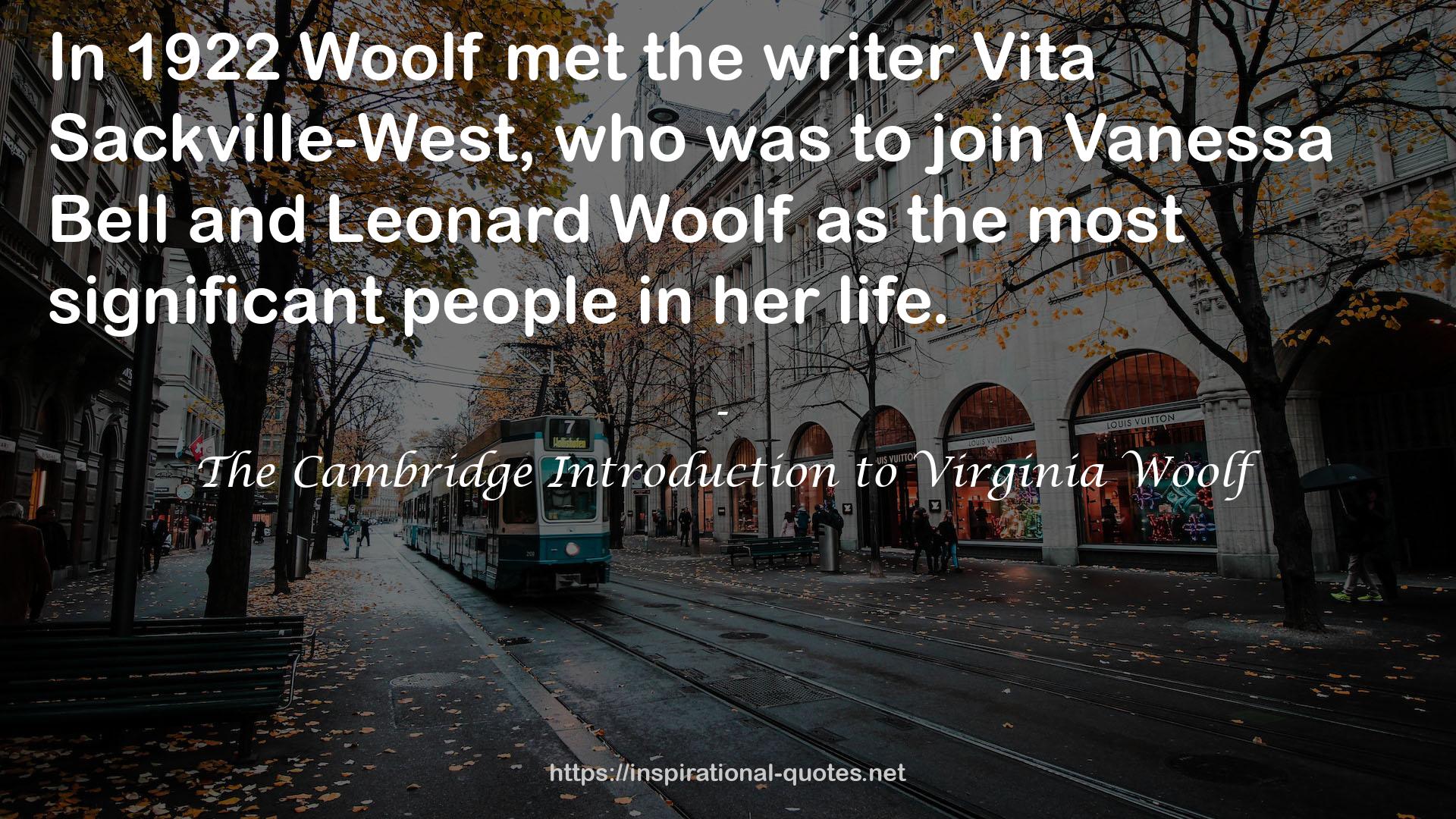The Cambridge Introduction to Virginia Woolf QUOTES
3
" The Bloomsbury Group has been characterised as a liberal, pacifist, and at times libertine, intellectual enclave of Cambridge-based privilege. The Cambridge men of the group (Bell, Forster, Fry, Keynes, Strachey, Sydney-Turner) were members of the elite and secret society of Cambridge Apostles. Woolf’s aesthetic understanding, and broader philosophy, were in part shaped by, and at first primarily interpreted in terms of, (male) Bloomsbury’s dominant aesthetic and philosophical preoccupations, rooted in the work of G. E. Moore (a central influence on the Apostles), and culminating in Fry’s and Clive Bell’s differing brands of pioneering aesthetic formalism. ‘The main things which Moore instilled deep into our minds and characters,’ Leonard Woolf recalls, ‘were his peculiar passion for truth, for clarity and common sense, and a passionate belief in certain values.’
Increasing awareness of Woolf’s feminism, however, and of the influence on her work of other women artists, writers and thinkers has meant that these Moorean and male points of reference, though of importance, are no longer considered adequate in approaching Woolf’s work, and her intellectual development under the tutelage of women, together with her involvement with feminist thinkers and activists, is also now acknowledged. "
- The Witch Sisters (The Taker, #2.5)
- I'll Be Yours
- So Over My Head (The Charmed Life, #3)
- A Charmed Life (The Charmed Life, #1-3)
- Can't Let You Go (Katie Parker Productions, #5)
- The Big Picture (Katie Parker Productions, #3)
- In Between (Katie Parker Productions, #1)
- On the Loose (Katie Parker Productions, #2)
- Engaged in Trouble (An Enchanted Events Mystery #1)
- Royally in Trouble (Enchanted Events, #2)

